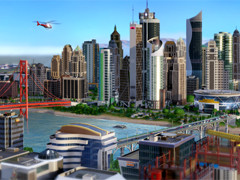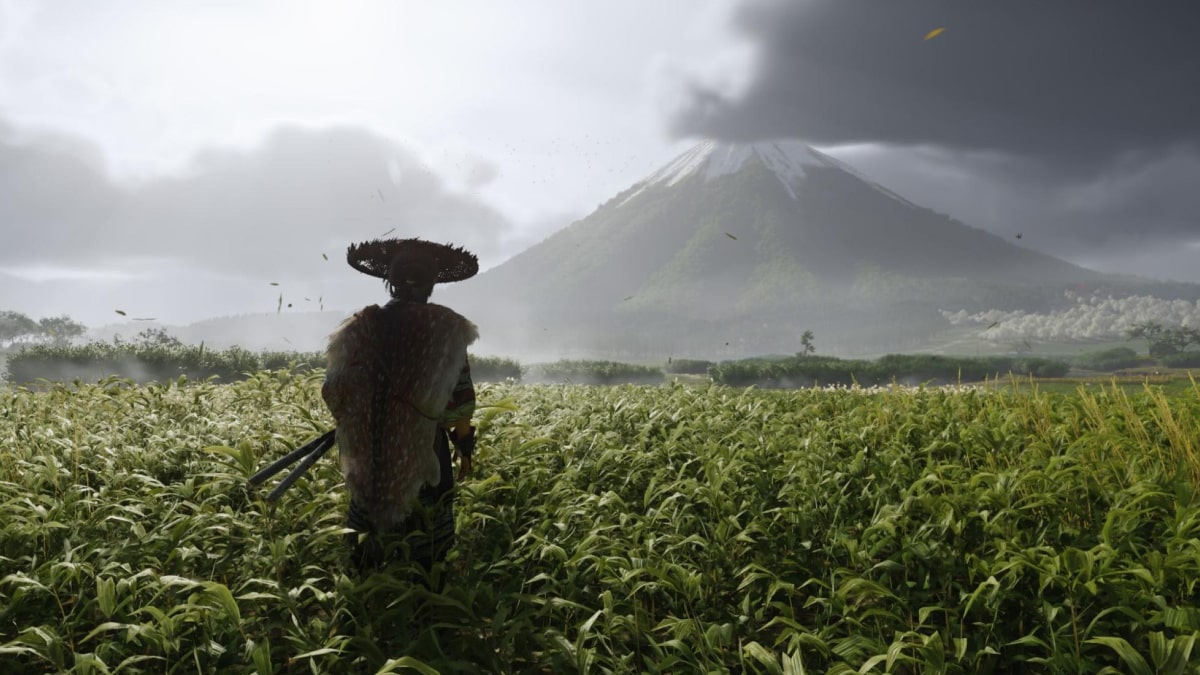You can trust VideoGamer. Our team of gaming experts spend hours testing and reviewing the latest games, to ensure you're reading the most comprehensive guide possible. Rest assured, all imagery and advice is unique and original. Check out how we test and review games here
It can’t be easy being Boris. Which traffic do you grind to a halt for roadworks? How much of the budget should you set aside for haircare? And how many Boris Bikes should be put into circulation?
But if you fancy yourself as a city-builder, Maxis’ latest could be, ahem, right up your street. With the SimCity beta due to kick off later today, I spent six hours with the latest build of the game, digging out clues and uncovering everything you need to know to become a better mayor.
Understanding the region
- When you first start a game of SimCity, you’ll be presented with the region screen. Picture it as SimCity’s version of The Sims’ Neighbourhood screen, with individual plots of land available to build cities.
- Each region has room for up to sixteen cities, with additional spaces reserved for a Great Works Site – a spectacular end-game construction that players can build once they’ve earned the required cash. Players can save up to ten regions per Origin account.
- Options for Great Works Sites include a Solar Farm, International Airport, Space Center or an archaeological wonder, with each specialised towards encouraging tourism, happiness or additional residents to each city within the region.
- All sixteen cities can be controlled by a single-player or divided between multiple players. If a city is owned by another player, you’ll be able to take a look at it by clicking it from the region screen.
- Region play encourages cities to work together and specialise within particular areas. For example, one city could be a tourist hotspot, while another could provide plenty of industrial activity, each working collaboratively to build a more desirable region.
- Always be careful when deciding which city you want to focus on industry. The wind direction can cause air pollution to spill out into surrounding cities.
- Finances are managed on a per-city basis. If you own all sixteen cities, the cash won’t be pooled into an overall budget, and can only be spent in the city it was earned in.
- Utilities and emergency services can be shared between cities within the region. If you have an excess supply of water, or unused police cars and ambulances, you can sell or offer your services to neighbouring cities.
Planning your city
- Cities are surprisingly small in the latest SimCity, so to avoid bulldozing and restructuring your city later on, it’s good to have an idea of what you want your city to look like before you lay down the first roads.
- Zoning is still split into three types: Residential, Commercial and Industrial. Density is now determined by road size, meaning you’ll need to build wider roads to accommodate a higher population density and bigger buildings. Wider roads will also ease traffic flow.
- You can upgrade (or downgrade) your roads at any time by clicking the Upgrade button on the bottom left, and then selecting the appropriate road. Longer roads will cost you more Simoleons.
- Because all traffic visiting your city will enter via the adjoining highway, it’s best to start your city with a few wider roads to ease traffic flow issues later on.
- When zoning your city, always be aware of your Sims’ needs and desires. Although they need work, Sims won’t like living next to industry or pollutants like rubbish dumps or sewage works, but do like ease of access to commerce.
- Holding ‘Ctrl’ lets you quickly zone areas along surrounding roads or blocks.
- Don’t be afraid to get creative with your city layout. My Sims seemed perfectly happy in my Spiral City (pictured above) – until the water supply got polluted, at least…
Utilities
- As long as they’re connected by road, water towers and power plants will provide power to your entire city – not just the local area. However, because your water supply can be polluted by nearby industrial work, you’ll need to be aware of where you position your water towers. Avoid placing them in or around industrial zones.
- And remember to add more water towers as your city grows. Your Sims will abandon their houses and businesses if there isn’t a big enough supply of water or if the water supply becomes polluted.
- Wet and dry seasons will also impact the water supply.
- There are multiple types of power plants, including options for wind turbines, coal, oil and nuclear reactors. Wind turbines are cheapest, but only work at optimal capacity when there is a high wind speed.
- If your city lacks coal and oil resources, you can choose to accept deliveries from the local region. This comes at a cost, but it could be worth it to provide power to your Sims.
- Though they’re more efficient than wind turbines, oil and coal plants can spread air pollution. Take note of the wind direction and wind speed when placing them.
- Air pollution can also spill over into surrounding cities.
- Sewage management can greatly affect a city’s happiness. Having multiple sewage pumps and rubbish dumps is vital, but remember to position them as far away as possible from residential areas.
Emergency services
- Emergency services are essential to the day-to-day running of your city. Keeping a lid on crime rates, fires and health is key to growing your city into a desirable area.
- Unlike water and power, emergency service coverage is regional. You’ll need to build additional emergency service stations or upgrade existing ones to grow the coverage within your city.
- Police cars automatically offer local police coverage as they roam the city. You’ll be able to see robberies taking place and police cars racing to the scene.
- Education and unemployment can affect your crime rate. If you lack jobs or educational facilities, expect your crime rate to surge.
Mass transportation
- As your city expands, your roads will struggle to cope with the amount of traffic. Building extra methods of transportation, like buses, railways or airports can help improve traffic flow and encourage tourism.
- Placing bus stops around the city is the cheapest way of optimising transportation. You can grow commerce by placing bus stops near shops, providing Sims with easier access to commercial businesses.
- Trains provide a faster method of transport for your Sims within a city, and even between cities, shortening commute times for your entire population. Rail can be expensive to run, though, and placing railway tracks can be fiddly given the limited space available in your city.
- Different transport options have different effects on local Sims. A nearby rail station will boost happiness in the surrounding area, while a noisy airport will anger local residents.
- You can also upgrade your roads to accommodate streetcars (or trams as they’re known over here), allowing for more efficient transport on your existing roads.
- Adding a cruise liner dock to an existing port is an easy way to encourage tourism.
City hall and finances
- Always remember to keep an eye on your city hall. Upgrades for the building become available once you hit resident milestones, and allow you to build more efficient buildings for attracting tourism, raising cash or improving emergency services.
- By clicking on your bank balance you’ll be shown a detailed breakdown of all your finances, allowing you to see where all of your money is being spent, and where your incoming cash is coming from.
- From here, you can also alter individual tax rates for residents, commercial businesses and industry work. If you want to increase tourism and commerce, think about lowering the rate of commercial tax to encourage businesses to set up in your city. Alternatively, if you’ve attracted wealthy Sims and want to raise a bit of cash, increase the residential tax rate.
- If you’re running low on cash, this screen also lets you apply for a loan. You can apply for three loans at a time (known as bonds) with loans of 25,000 and 50,000 Simoleons available per loan. You’ll be unable to apply for additional loans until the previous loans have been paid off.
Upgrades and micro-management
- Almost every utility, emergency service station or transport hub can be upgraded individually to further optimise its functionality. Add extra wings onto hospital clinics to treat more patients, build extra generators to boost power, or build additional garages for refuse trucks in order to collect more rubbish.
- It’s important to keep an eye on the running costs of your buildings. To save on costs, you can temporarily shut down individual utilities, like power plants, emergency service stations or transport hubs by selecting them and clicking the power button.
- We found transportation to be the biggest expense. Be sure to keep note of how many Sims are using your airports and railways. If the number of commuters and tourists is minimal, close them to save a bit of cash.
- Remember to keep an eye on your Data Maps, too, which offer a visual representation of your resources and an easy way to track areas in need of improvement.
City Specialisations
- One of the biggest additions to SimCity is City Specialisations. City Specialisations are separated into six groups – Mining, Drilling, Trading, Electronics, Culture and Gambling – and can completely alter the look and function of a city.
- Specialisation lets you build advanced buildings and landmarks, allowing your city to specialise in particular areas. However, they’re usually incredibly expensive, and best left until you’ve grown your city and got a healthy flow of cash.
- Each specialisation serves a specific purpose. For example, specialising in gambling encourages tourism with its huge casinos and spectacular hotels, while specialising in culture lets you schedule rock concerts and motocross events, attracting residents and boosting happiness.
- Buying a structure from a particular specialisation doesn’t lock you into that specialisation. You can build as many buildings from across as many categories as your budget and real estate allows for.
Disasters and achievements
- You’ll earn in-game achievements for reaching certain milestones, for example, boosting your tourism rate or encouraging a particular amount of Sims to use the airport.
- Achievements also unlock specific in-game elements, including disasters. Each disaster is locked behind a specific achievement, and can only be unlocked by earning that achievement.
- Disasters will take a fair amount of time to unlock, too. By the end of my six hour play session, I had unlocked two: the meteor strike, and a fire-breathing monster.
SimCity launches on PC on March 8, 2013, with a Mac version due for release at a later date.
NOTE: This article originally incorrectly stated that only 3 cities could be built per region. EA has since informed VideoGamer.com that up to 16 cities can be built per region. VideoGamer.com would like to apologise to EA for this mistake.

/https://oimg.videogamer.com/images/8a9e/simcity_31.jpg)
/https://oimg.videogamer.com/images/4bb7/simcity_29.jpg)
/https://oimg.videogamer.com/images/2b02/simcity_30.jpg)
/https://oimg.videogamer.com/images/131f/simcity_26.jpg)
/https://oimg.videogamer.com/images/18b7/simcity_23.jpg)
/https://oimg.videogamer.com/images/aeab/simcity_25.jpg)
/https://oimg.videogamer.com/images/252c/simcity_28.jpg)
/https://oimg.videogamer.com/images/ee13/simcity_27.jpg)
/https://oimg.videogamer.com/images/4817/simcity_17.jpg)
.jpeg)





